
Is your cat stressed? Signs to look out for and how to help

Lucy Hoile
29 June 2023 | 14 minutes read
Let’s face it, your feline probably has plenty of attitude – but how do you tell the difference between sass and stress?
Expert cat behaviourist Lucy Hoile explains the different reasons behind why your cat might be stressed. Read on to learn how you can spot those tell tale signs of unhappiness along with ways to help calm your stressed kitty.
- Why is my cat stressed?
Medical feline stress
> Why do medical problems cause my cat stress?
> Signs of medical feline stress
> How to help an ill stressed cat - Social feline stress
> Why do social problems cause my cat stress?
> Signs of social feline stress
> How to help a socially stressed cat - Environmental feline stress
> Why do environmental problems cause my cat stress?
> Signs of environmental feline stress
> How to help an environmentally stressed cat - How to get a stressed cat to eat
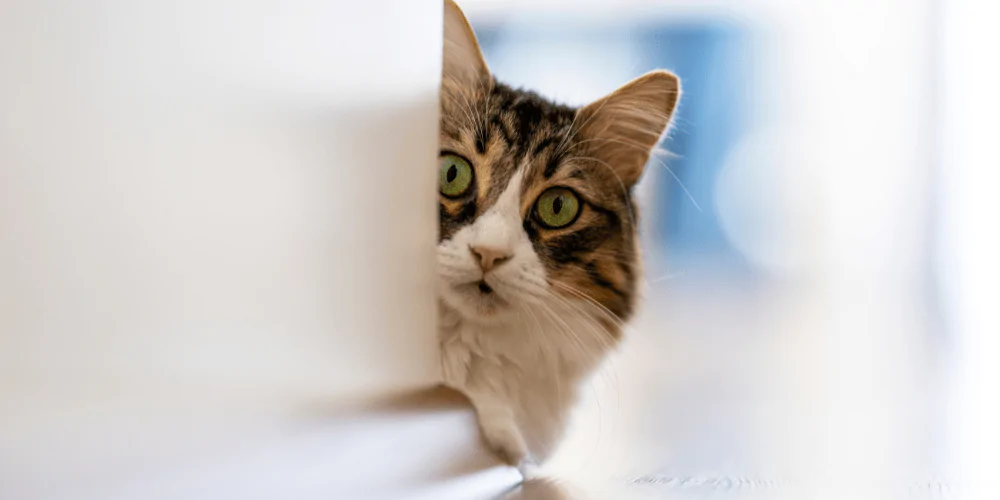
Why is my cat stressed?
Cats are solitary predators and will always hunt alone and bring back food for themselves, even if they live with a massive colony of cats.
They’re also an avoidance species in nature, being biologically programmed to avoid stress or harm for their survival. This means they’ll tend to avoid fights (unless they have no other choice but to be aggressive). Cats will usually choose to flee if they go into fight or flight mode.
Your cat’s personality, temperament, and experiences all affect what causes them stress. There are three main types of stress in cats – medical, social, and environmental.
It’s also important to keep in mind that the stress experienced by a pregnant cat (prenatal stress) can affect the development of the kittens.
Even before they’re born, your cat is primed for the environment they grow in. So if mum is pregnant in a harsh environment, her kittens become adapted to that environment. Kittens born into a feral lifestyle (free living, hunting for food, avoiding predators, trying to find shelter) are naturally more reactive to help them survive. This can lead to challenging behaviour when they’re taken into domestic homes.
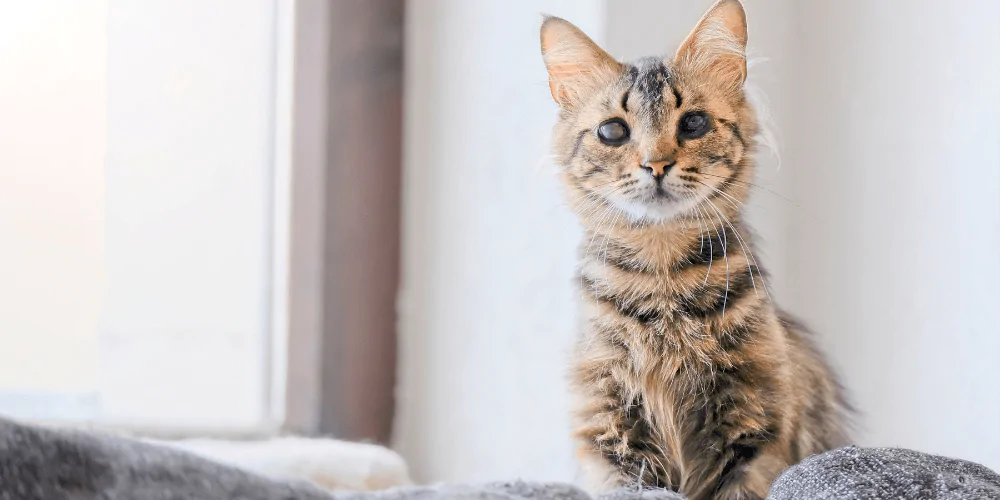
Medical feline stress
> Why do medical problems cause my cat stress?
Health and behaviour are very much interlinked, so your cat may become stressed if they are feeling any sort of pain or discomfort. For example, cats are quite prone to urinary issues like feline urinary tract disease and kidney problems.
It’s natural for your cat to become anxious and less confident when poorly as they feel vulnerable. This is especially true of older and arthritic felines.
A poorly cat may become stressed due to:
- Sensory loss (such as hearing and eyesight)
- Not being able to use their territory in the same way (for example, being in too much pain to use the litter tray)
- Feeling less confident being picked up (as it hurts too much)
- Thinking they can’t defend themselves properly and so feel more vulnerable around other cats
- Frequent trips to the vet (if they’re not carrier trained and need to go in one constantly)
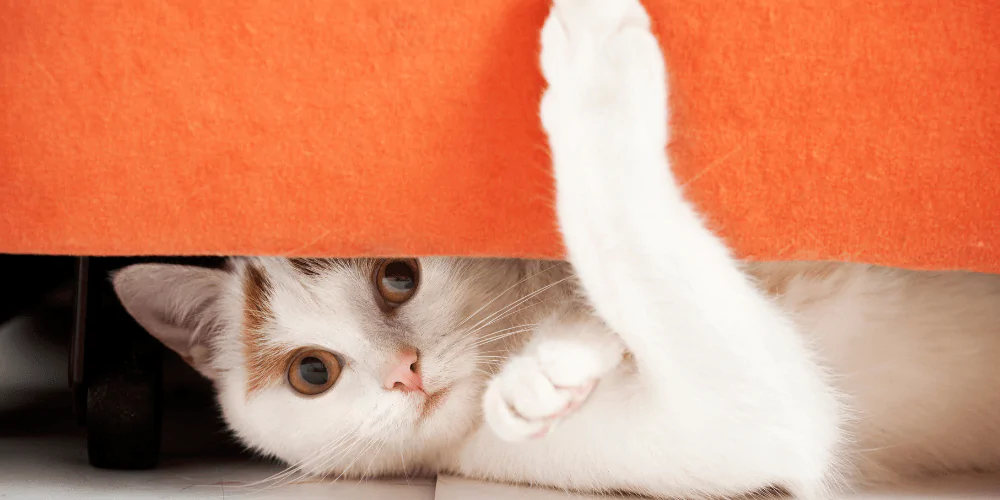
> Signs of medical feline stress
It can be difficult to separate symptoms of a medical problem from signs of stress in cats. Always speak to your vet if your feline is ill and you’re worried about their behaviour.
Signs that your poorly cat might be stressed include:
- Going off food
- Vomiting
- Diarrhoea
- Excess grooming (and so pulling out fur)
- Not keeping up with grooming/poor coat condition (arthritic cats find it hard to reach around their back)
- Excessive hiding in the house
- Licking the abdomen until bald (as cats are prone to cystitis and stomach issues)
- Not using their litter tray (they may find it difficult to use and so will toilet somewhere else readily available)
- Becoming less active
- Showing less interest in play and social interactions (if they enjoyed it before)
- Isolating themselves
- Showing more aggression
- A change in reaction to their carrier (could develop a negative association if going to the vets more)
Cats are very stoic creatures and will try to hide their pain for as long as possible. You’ll know things are severe when you can see visible signs of pain in your feline. There’s not a singular sign which indicates pain so it’s vital to look at their behaviour and body language as a whole.
If your cat is in pain, they may:
- Hide more often
- Struggle to chew dry food (picking it up and dropping it again) if they have dental pain
- Lash out
They can also show subtle changes in their facial expression. Examples include hunched-up shoulders (sitting higher than the middle of the head), a tight muzzle, and dilated pupils.
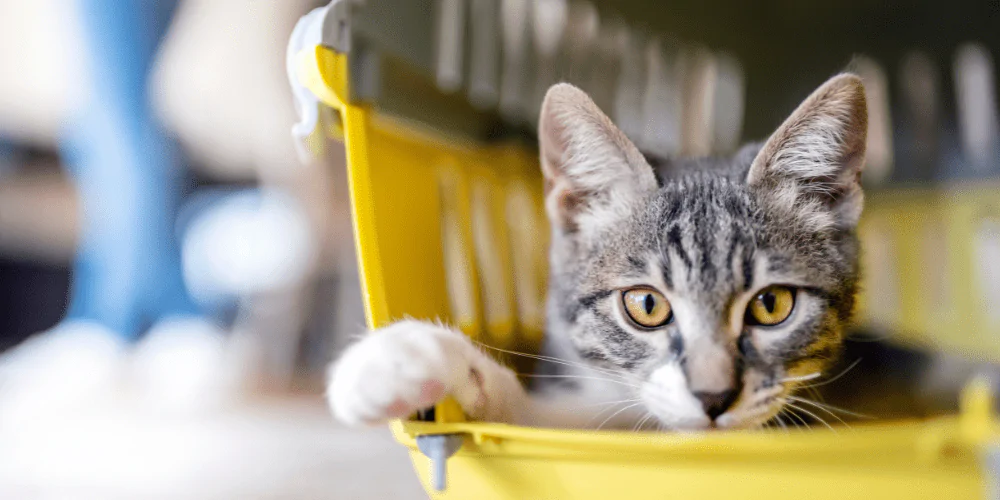
> How to help an ill stressed cat
A poorly cat needs to be seen by a vet to get everything checked out.
You can also reduce stress by:
- Helping your cat get comfortable with the carrier through training. The carrier should be kept out at all times to help it become part of your cat’s territory. You’ll want to take your cat to the carrier, not the other way around.
- Getting your kitten used to the kind of vet interactions they’ll regularly have, such as checking their ears and paws.
- Doing an audit of your home to make sure it meets your cat’s needs and medical issues. For example, an arthritic cat needs easier access to food bowls and litter trays.
It’s important to take your feline for regular checkups, especially as they get older. Remember that even if you don’t think anything is wrong, cats hide illness and pain well.
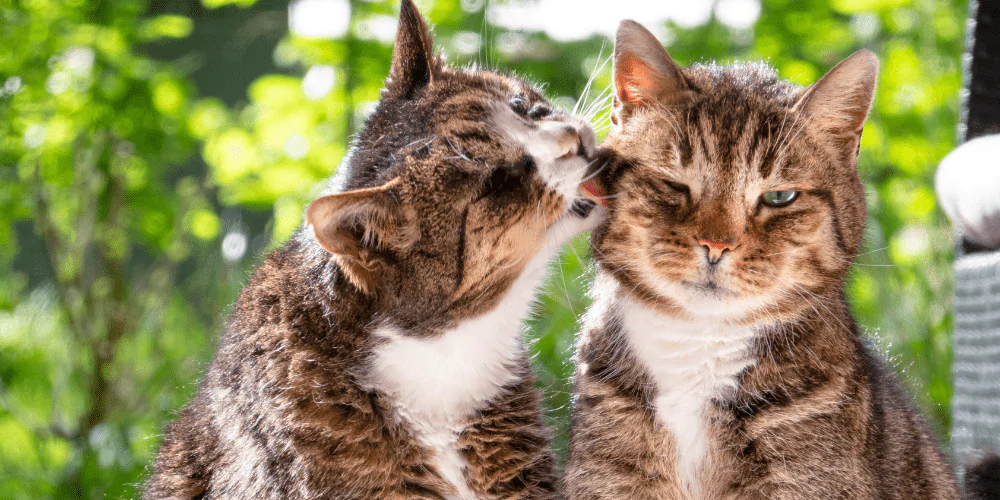
Social feline stress
> Why do social problems cause my cat stress?
Many people think cats are solitary but they are in fact sociable flexible creatures. They can live with humans, cats, dogs, and other animals.
Cats don’t have the same biological social need that dogs do – they will live with other animals because it works for them. So it’s important to understand your cat’s social needs and make sure their environment meets that.
Social stresses for cats include:
- Other cats in the house – Some felines will flat-out refuse to live with other cats. Putting them in a multi-cat household can then be a massive source of stress.
- Clashing personalities – You have to think about the dynamics between individuals. Just because your cat had a good relationship with another cat before, doesn’t mean they’ll get on with all cats. Temperaments need to complement each other.
- Being alone in the house – If you have a playful kitten that likes social interaction, they’ll remember those interactions and be stressed and lonely if they don’t continue.
- Cats outside the household – Felines coming into your cat’s territory is a huge violation and trigger of stress (such as urine marking and aggression). This includes coming into the house or garden, as your cat will see them through doors and windows. Your kitty feels like their territory is no longer their own and not safe.
- Unwanted human interactions – Interactions should always be on your cat’s terms. They can become stressed from unwanted strokes, pick-ups, being flipped on their back, etc.
- Excitable children – Kids are unpredictable and can move quickly and make loud noises. This can be difficult and unsettling for your cat.
- Dogs – Being around dogs can be stressful for your cat. They can be chased and blocked from getting to their territory, litter tray, food, etc.
- Prey species – Living with birds or rodents can be highly frustrating, especially if they can see them but can’t get access to them.
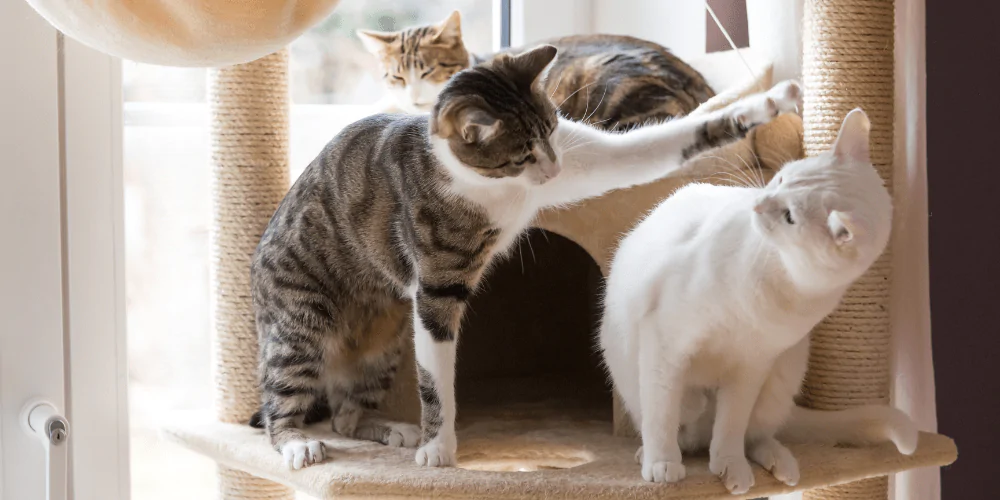
> Signs of social feline stress
Signs that your cat isn’t getting on with other cats in the household include:
- Physical fighting
- Vocalising such as hissing, growling, or drawn-out meowing (as cats don’t tend to meow at each other) whether fighting or just passing by
- Signs of injuries (abscesses, cuts, fur flying)
- Blocking each other, for example, getting to the cat flap or litter tray
- Competing over the best spots (if having to share resources like cat trees)
- Urine marking/spraying (if scared they will spray to mark their territory)
- Weeing and/or pooing in unwanted places (if scared to go near litter tray or out of hiding)
And if your cat is stressed from another cat outside the home, they may:
- Look scared if the cat comes by
- Either fight the cat or run away
- Avoid the area where the outside cat hangs around
Your cat may show that they’re stressed or afraid of humans by:
- Trying to avoid the person they don’t like and have better relationships with the people who don’t cause them stress
- Showing aggression/negative body language like tail swishing, fur rippling, sharp heard turns, swiping, and nipping
- Hissing (at this point they’re very stressed)
Other animals in the house causing your cat stress can lead them to:
- Hang back from the dog if they want to get past
- Run away from the dog if being chased
- Show aggression towards the dog
- Pace around any prey animals
- Show redirected aggression to you if you try to distract their attention away from the prey animal
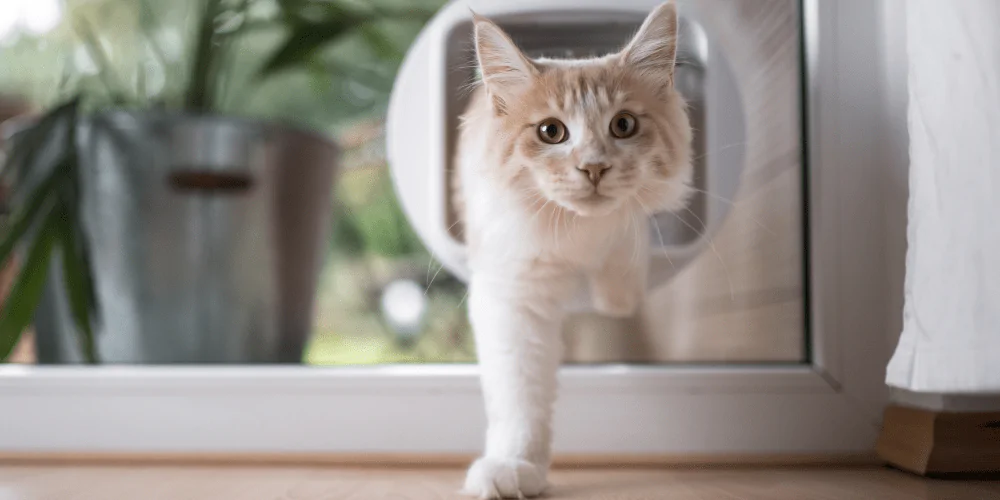
> How to help a socially stressed cat
There’s plenty of options to help your kitty if a person or another animal is causing them stress.
Ideally you need to help your cats get along better if they’re stressing each other out. Here’s what you can do:
- Encourage them to be apart so that when they do come together, the pressure is off. They know they have their own spaces and a neutral middle ground.
- Make sure there’s enough resources to go around and avoid any competition. This includes food and water bowls, litter trays, and scratch posts. Each cat also needs more than one bed.
- Feed your cats away from each other.
- Add height to their territory as cats naturally feel more confident up high.
- Make the most of your home/cats’ territory. Create lots of spaces up high and in different rooms to give your cats the opportunity to keep away from each other.
If your cat needs de-stressing from a feline outside the home:
- Block access to the house either by not using a cat flap or using a microchip-accessible flap.
- Keep windows closed or use screens to also help stop unwanted access.
- Place food bowls and litter trays far away from windows, doors, and cat flaps. Seeing these can encourage other cats to come into the territory.
- Cover windows with things like sticky back frosting so light can come in but your cat can’t see other cats outside.
- Make it harder for cats to come into the garden with high fences, blocking off holes, etc. Any changes should be safe and ethical so you’re not putting these cats at harm.
- Place piles of branches or a few plant pots on sheds so cats can’t come and watch from up high.
- Make sure your garden isn’t one big open space to reduce the intensity of interaction between cats. Create plenty of nooks and crannies for your cat to hide with feline-friendly plants, shrubs, and furniture.
To help calm a cat who finds themselves stressed by humans:
- Make sure every interaction is on your cat’s terms. This will vary based on their temperament, how used they are to being handled, and whether they’ve had past negative experiences.
- Do the consent test, which is where you hold out your hand and invite them for a stroke. A friendly cat will rub their face on you.
- Keep checking that your cat is consenting. After a couple of seconds of the test, wait and watch what they do. If they turn away, they’re finished with the interaction. If they turn back to look at you, they want you to carry on stroking them.
- Give them a slow blink before interacting. This is a nice way to show your cat that you’re not a threat as staring can be intimidating.
Ways to help your cat avoid stress from dogs include:
- Creating dog-free areas with baby gates or pet gates and making sure your cat’s preferred places and resources are in a dog-free zone.
- Managing the dog if they try to chase your cat. Keep them on a lead or distract their attention away from the cat and give lots of rewards for not chasing.
- Make sure there’s lots of high places your cat can escape from the dog, especially in social areas like the living room.
If there’s prey animals in the house and your cat is getting stressed:
- Safety is key for everyone involved – keep the prey animals in a separate room where your cat can’t reach them.
- Give your cat lots of playtime with toys that can help with their predatory drive, like ping pong balls.
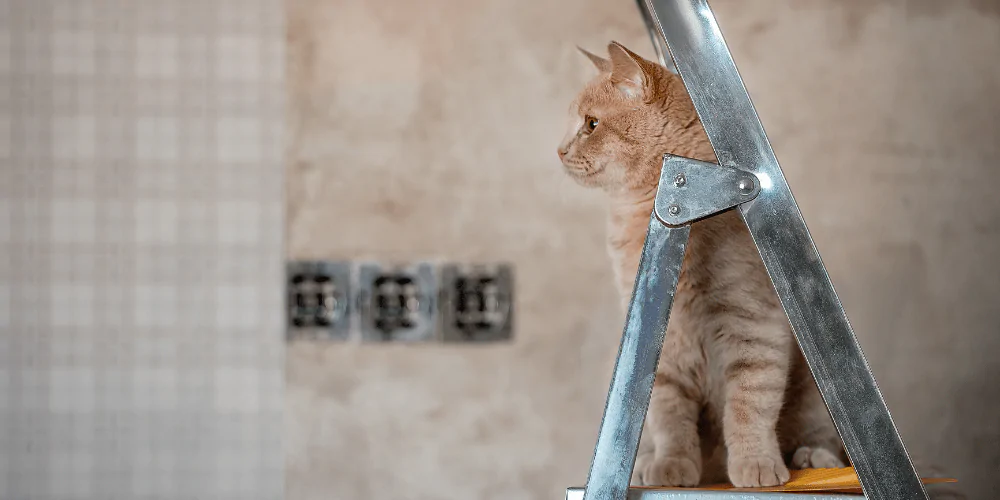
Environmental feline stress
> Why do environmental problems cause my cat stress?
The inside of the house is your cat’s core territory and the outside is their wider territory. They spend lots of time facial marking the house to make it smell nice and familiar.
Changes to their core territory (anything that shifts the scent profile of the house) is a massive cause of stress. This can lead to behavioural problems like urine marking.
Examples of environmental changes that can lead to stress include:
- Renovations – Having workmen coming in and out, rooms getting shut off and denying your cat access to their territory.
- Redecorating – Decorating over areas your cat has marked with a strong smell like paint.
- New furniture – Replacing the sofa, which is an important part of your cat’s territory and makes them feel safe and secure.
- New baby – The arrival of a new baby can bring lots of change, from creating a nursery to new furniture and a change of routine.
- Noisy gadgets – If your cat hasn’t been socialised to the everyday noises of a household, they will struggling living near things like washing machines and TVs.
- Other elements outside of your control – This could be noisy neighbours, fireworks, thunderstorms, etc.
It can also be very difficult and stressful trying to bring a truly feral cat into a human environment.
The key socialisation window for kitten is two to eight weeks old. If they’re found after this age there’s very little chance of them being comfortable in a household. It’s hard to give them proper vet care as they won’t be used to things like carriers and injections.
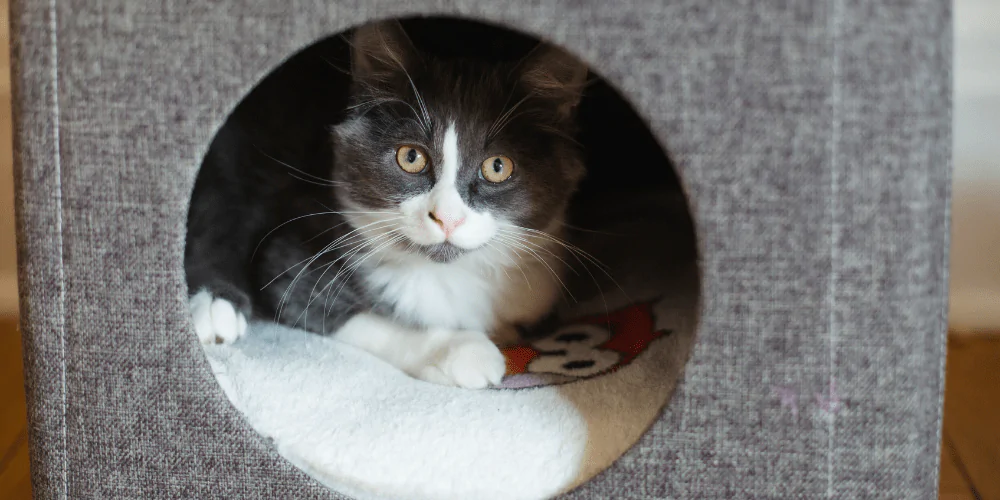
> Signs of environmental feline stress
A feline stressed out by their surroundings can show symptoms similar to a poorly cat. This includes:
- General avoidance of areas
- Excessive hiding
- Reluctance to play
- Seeking reassurance
- Going off their food or eating more than usual
- Little or over-grooming
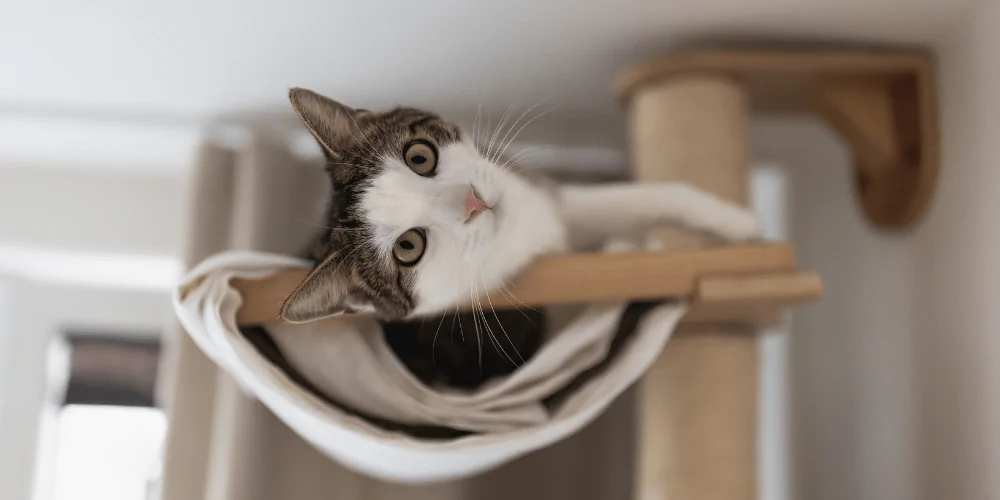
> How to help an environmentally stressed cat
Getting your DIY on? Here’s how you can help keep your cat chill:
- It can be useful to keep your cat completely out of the way during home renovations.
Think about putting them in a cattery if you’re having lots of work done and know they will be stressed out. They’ll still have to deal with stress when they return but this eliminates one source of stress. - If redecorating, do one part at a time and not in quick succession so your cat always has somewhere to go and doesn’t feel unsettled in other areas.
For things outside of your control like the weather and fireworks, give your kitty coping strategies.
- Create high places in the area where the stress is, so the cat can observe the action but out of the way.
- Open up other places for them to escape such as under beds and inside wardrobes.
- Try masking loud noises by putting on the radio or TV at a gentle listening level.
- Give them appropriate play, with things like wand toys (but no laser pens as this can cause frustration).
- Use other positive distractions like activity feeders, for example, a treat ball with holes for dry food.
- Sit with your cat and chat with/reassure them if they like social interactions. Give them plenty of treats and fuss.
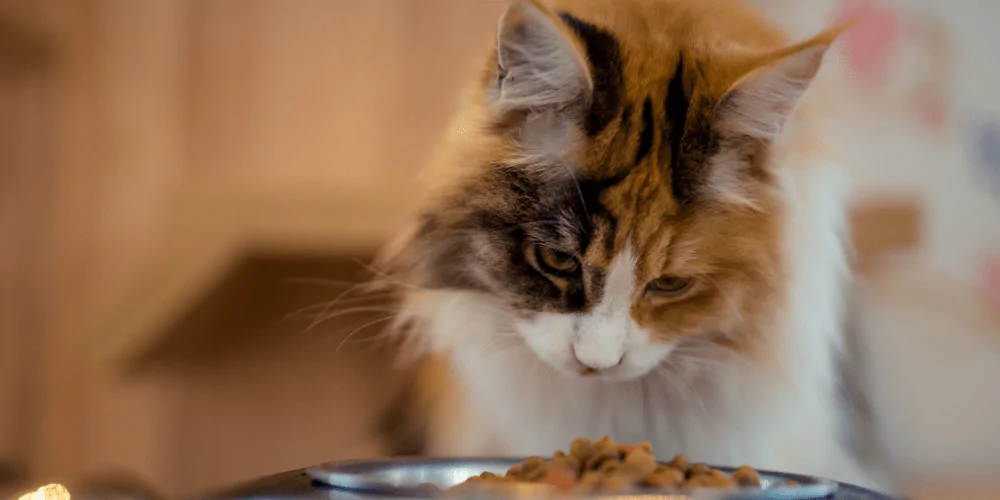
How to get a stressed cat to eat
Only focusing on getting your cat to eat isn’t helpful as it doesn’t deal with the stress itself. So it’s first important to find out what’s stressing them out. Speak to a qualified cat behaviourist if you’re struggling to find out why your cat is out of sorts.
Once you’ve sussed out the root cause of the problem, you can help get your cat to eat by:
- Varying their food with a new flavour and making it as smelly as possible.
- Adding a small amount of more palatable food to their regular meals to encourage their interest. For example, a small amount of cooked chicken or tuna.
- Warming up their food to make it more smelly and palatable.
- Moving your cat’s food to somewhere they feel safest and spend most of their time (as it could be the journey to get the food that’s putting them off).
- Giving them smaller meals more frequently throughout the day to keep food fresh and replicate their normal feeding pattern.
Look after your top cat with flexible cat insurance from Petsure.


